Welcome to Prisma Arena, a MOBA style board game that aims at a younger audience. Designed by John Fiore, Rory O’Connor, it’s a great example of the gateway family games at the core of publisher Hub Games’s releases. Players level up your characters while comboing cards together, striking other characters, and gaining points. The goal is to become a Guardian through combat training, getting 20 points in the game to win. The game lets you customize your characters, with a huge emphasis in representation and inclusion that I’ve never seen any game do. Prisma Arena was published by Hub Games in 2020, but has gone widely unnoticed until now. If the game developer sounds familiar, Hub Games also published Flip Over Frog, which I previously reviewed.
What’s In The Box?
- 2 sided game board
- 1 central game board (2 sided)
- 8 action dials
- 1 advantage token
- 12 standee bases
- 12 obstacle tokens
- 4 hero standees
- 8 Mo’kon Standees
- 36 combo cards
- 4 hero cards
- 4 guest hero cards
- 8 Mo’kon Cards
- 50 Prisma Power Cards
- 4 hero sticker sheets
- 4 hero lockers
- 4 hero storage bags
- 4 player aids
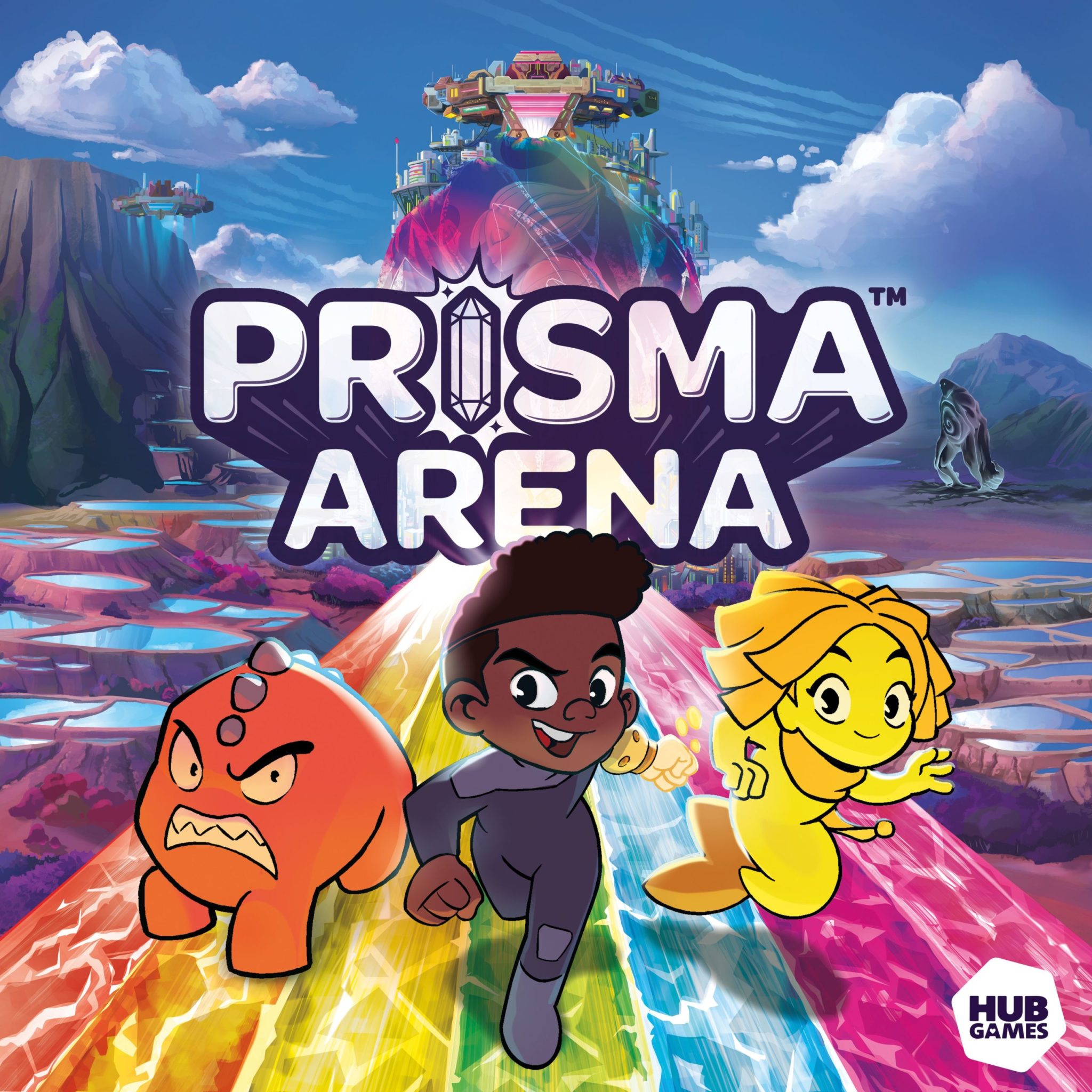
How Do You Play?
Hero Registration
Before even thinking about playing the game, a different type of fun begins. This is referred as “Hero Registration,” with players choosing their hero from the 4 available. This hero will represent you and will begin as a novice with the same values and abilities for everyone. As you play the game your hero will change by leveling up and gaining Prisma Power Cards and new uniforms. Your Hero has a standee and you can choose your own name to write on their card and storage bag. Each player will also get a locker to store their training gear.
Players then use reusable stickers to change their character each time they play the game to reflect their mood or preference for the day or even just for that play session. Stickers can be layered, making a huge variety of options.
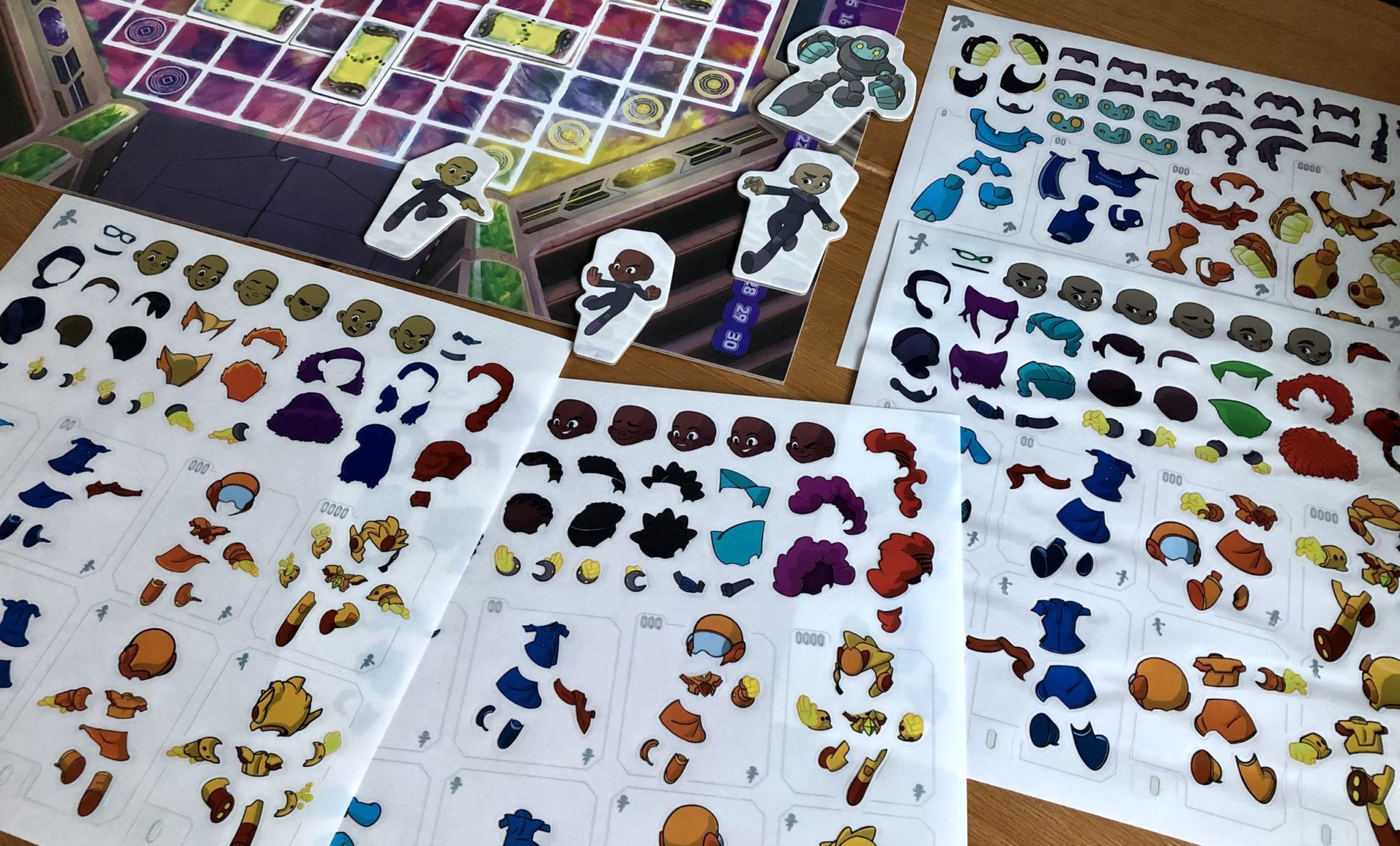
To the Board
Each player will control their hero and 1 or 2 Mo’kon. Depending on the player count, players will have different start zones that their characters will spawn from and an action dial. The dials start with the player closest to the board and when the the character is activated, their dial is turned and won’t be able to be activated again until their characters are reset.
Each player will then be dealt out 3 of each combo cards to form their starting combo deck. Players shuffle these cards — which will be used to either move, strike, or blast — and draw the top 3 to start the game. To add difficulty, the board has obstacles, making it more necessary to use your cards the best way possible for your strategy. In addition, players have prism powers depending on their heroes level, cards that give additional powers unique to that player.
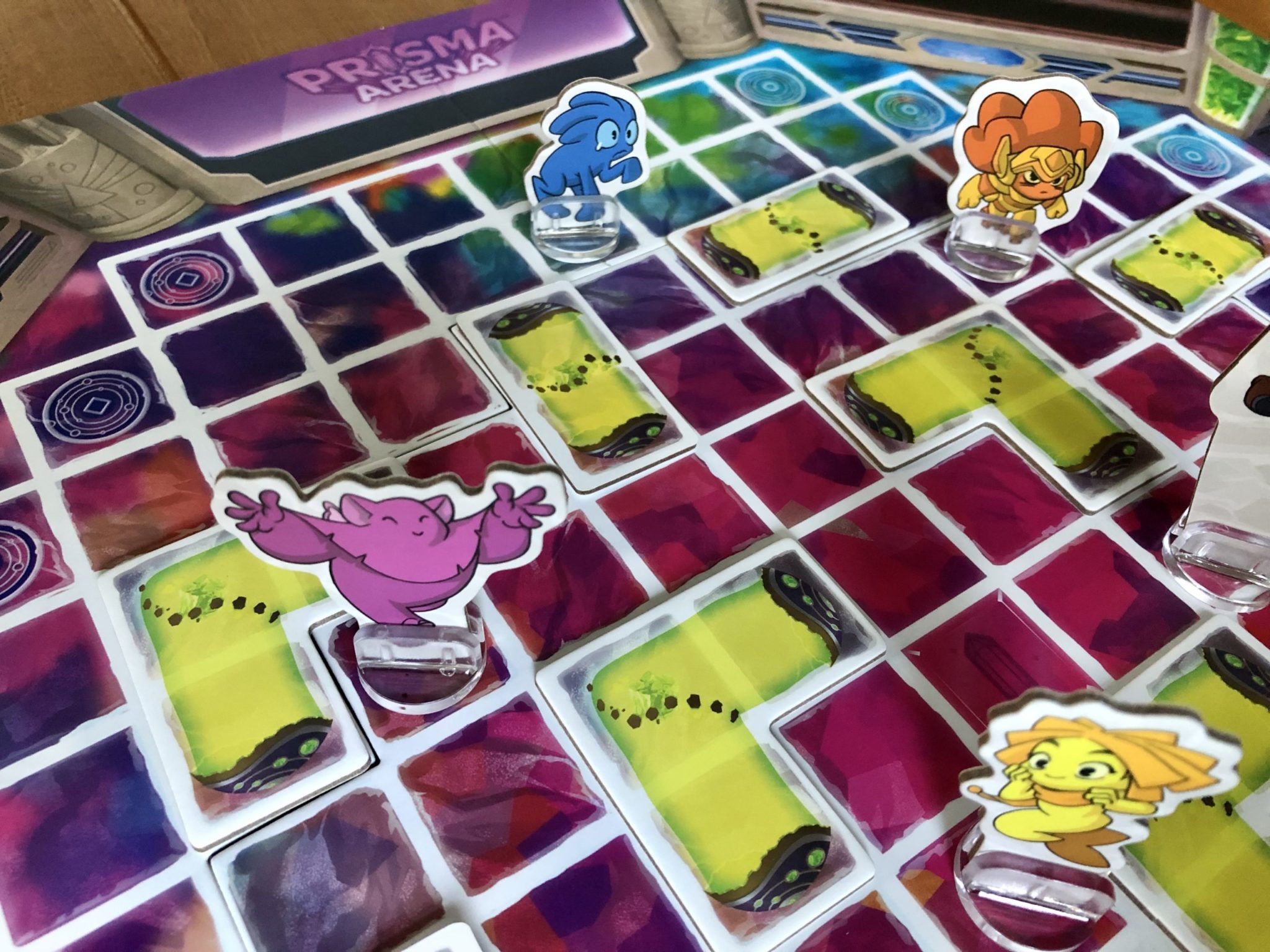
Players take turns activating one of their characters to move around the board and blast or strike their opponent(s). Each character has a hit gauge, and when full they are bounced from the arena, each player with a hit token will gain a point for each one on that player’s gauge.
When you activate a character on your team, you rotate the dial assigned to that character so that one of the move, blast, strike, or comb icons are facing the arena. You then perform that action; depending on your choice you can combo your cards together to make a more powerful move or keep them for a better time.
Move
When you move, which you will most likely do at the very beginning of the game, you can move your character a number of steps up to the character’s range listed on their card. All heroes and Mo’kon have a range of 0-4, and while one of your steps can be diagonal, the remaining need to be orthogonal. You can never move through obstacles or spaces occupied by other characters unless a card says you can.
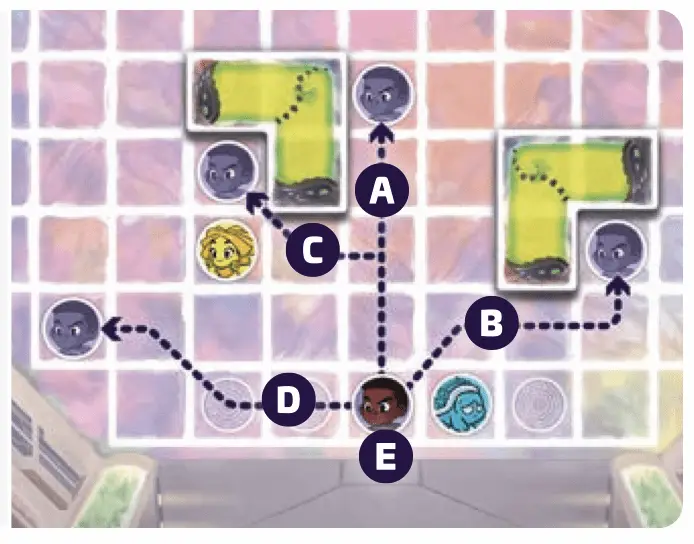
Whenever a character moves into a space that is edge-to-edge adjacent to another player’s character, they are now considered to be grappling, and the player moving won’t be able to continue moving. Once you are considered grappling with another player, you are limited to either a strike action or a combo action. For example, when grappling, you can not move or blast.
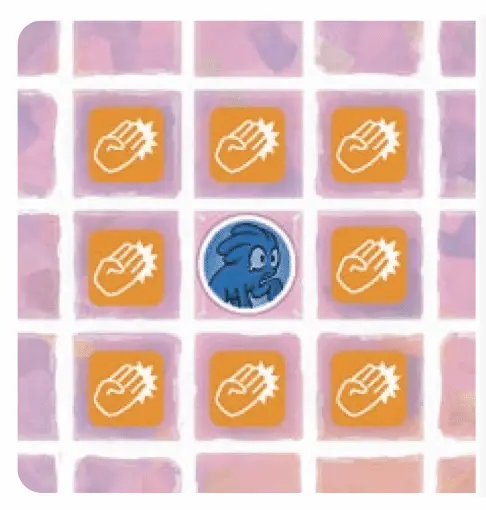
Strike & Blast
When performing these actions, the player deals the number of hits equal to their force. They then place one of their hit tokens on that player’s hit gauge, and, once full, they are temporarily bounced from the arena. A strike is done when a character is in one of the 8 spaces directly adjacent to their own.
A blast, on the other hand, is performed by targeting a character that is 2-4 spaces away in a straight or diagonal line from you. It’s worth noting that combo card effects, abilities, or prism powers can change how you attack, including the number of hit tokens you place.
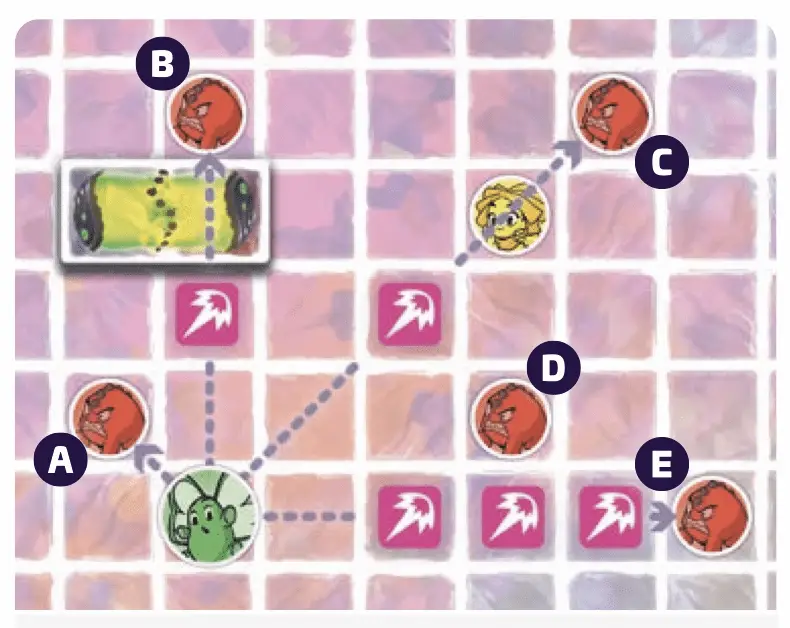
Combos
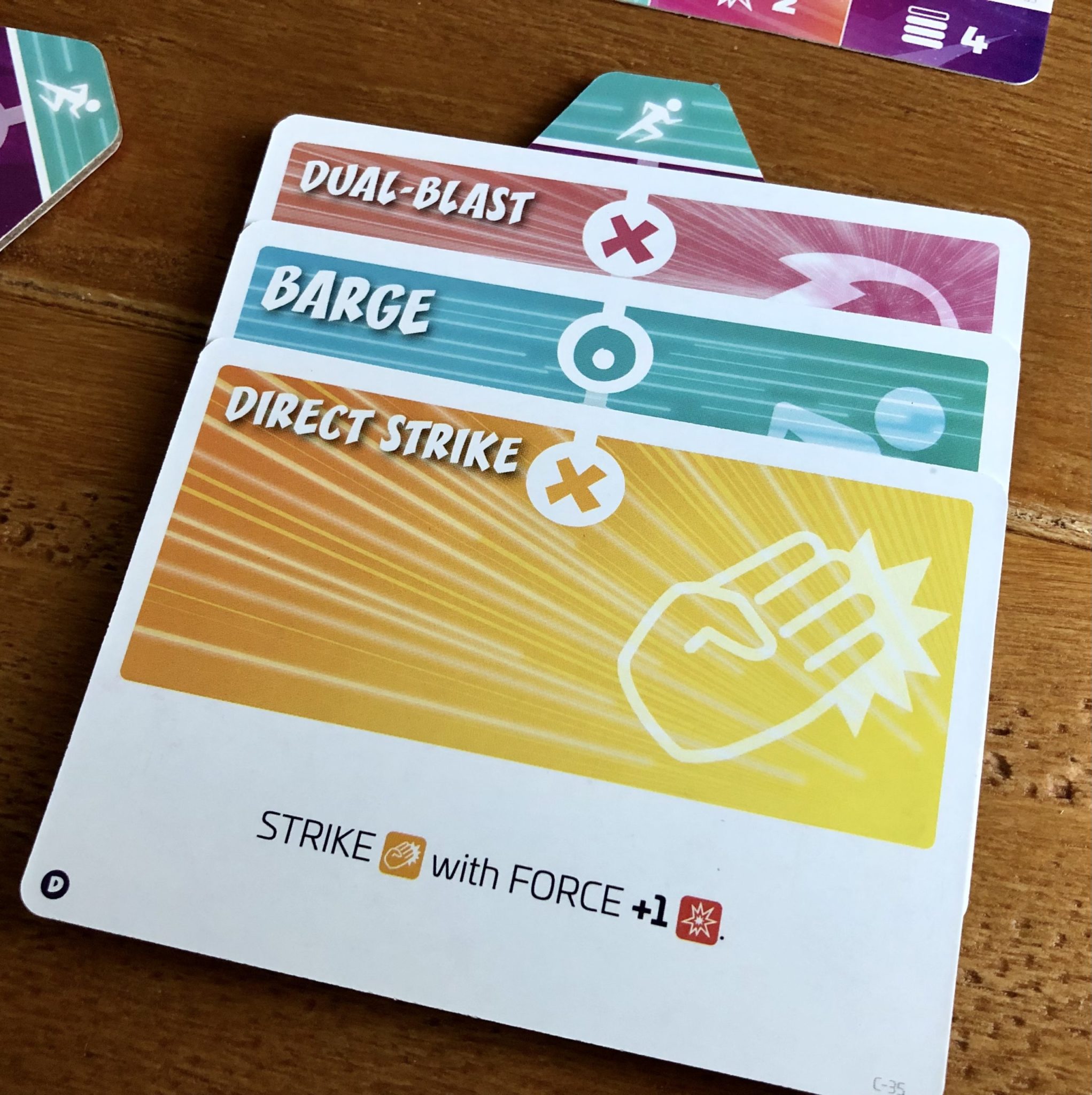
These cards let players perform an over the top sequence of actions during their activation. There is no limit to the number of combo cards you can hold during a round, but you always discard down to 4. You could essentially make a super strong combo by using all your cards in one activation, but that rarely happens. Combos are done by moving the action dial either to a circle or “x” spot, or by taking one of the other 3 main actions first to then use combo cards as the dial and cards allow.
After attacking, whenever a character’s hit gauge is full, that character is bounced from the area. The character is placed back on their actions dial off the board, players score 1 point for each token they have on that card, and then those hit tokens are given back. Players take turns activating one of their characters per turn until one player gains 20 or more points. After that score has been achieved, once they finish the round, the player with the most points wins the game.
Replaying the game
The game is designed so that players will continue to play over and over again, and each game, a player has a chance to upgrade their hero. This will allow more prism cards to be used while also adding more strategy to the game as you progress your character. When playing with other players who might not have the same level as you, all players will need to play at the grade of the lowest level player.
The Verdict
Prisma Arena does some special things that many others don’t, giving it a unique appeal and sets it apart. The huge focus on representation and inclusion is something that can’t be said about the majority of other games. Prisma Arena can be played in a somewhat campaign-like fashion or can be played as a one off, making it highly adaptable to a variety of playing styles. It’s tactical, yet strategic, as players are fighting each other the focus centers on tactics. Yet because the characters re-spawn after being defeated, the gameplay requires strategic thinking and planning.
For gamers who like customization, Prisma Arena includes a wide array of stickers to make your hero unique. You can change out which stickers you use and many of them can be placed on top of others, making an endless array of possibilities. The game invites inclusion and representation by allowing you to craft a character that represents the players.
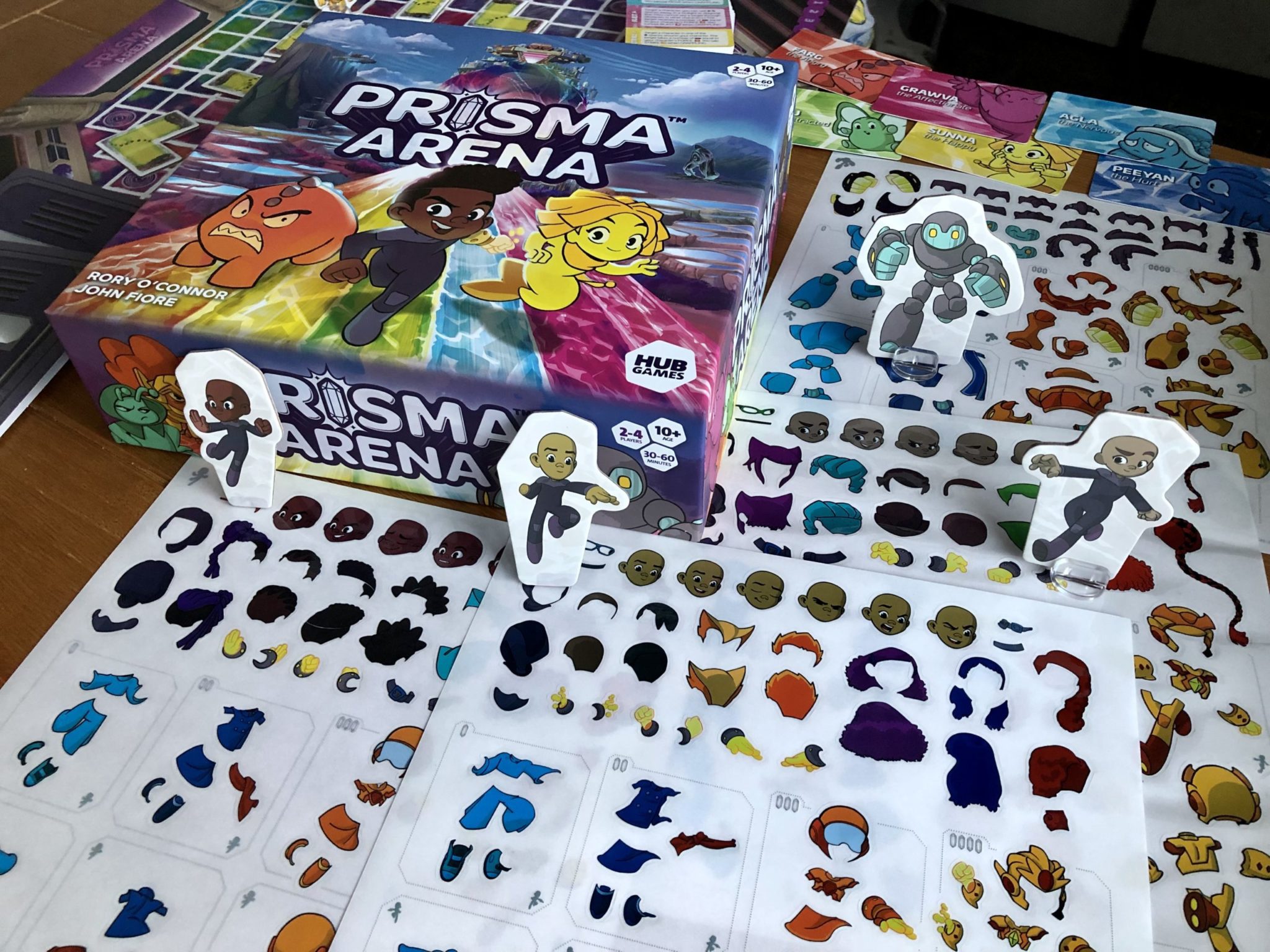
Since the characters can level up, it encourages players to return to the game. Just like video games, players become invested in their heroes and want to build them up. This is a fun way to do this, but it doesn’t complicate the game by any means.
The game design makes Prisma Arena great for kids, because instead of killing other characters to win, they are bounced instead. This makes the game feel exactly how it’s marketed, it’s a training arena where heroes practicing fighting to sharpen their skills. This way, players are competing for points by making hits instead of just trying to eliminate everyone else. This changes the game from a more tactical feel to a more strategic feel. It makes it ok to get bounced, as its going to happen at some point, but you know that each hit token you place on other characters is getting you closer to victory.
The one thing that I get excited about in Prisma Arena is the combos. These combos can’t be done every single turn, so when you string together some nice cards to get you lots of hits, it feels so satisfying. The possibilities with these cards are almost endless, but they are still simple enough to understand without needing to visit the rulebook on every card.
Overall, Prisma Arena is an enjoyable, approachable game for folks of many ages and skill levels because of the accessible nature of the fighting style, the large amount of combo cards, and the different possible characters to play as. If you are looking for a kid friendly MOBA style combat board game, you need to get this one to your table.
You can pick up a copy of Prisma Arena at your FLGS, Amazon, or the Hub Games shop, where it’ll run you about $40.
Images Courtesy of Hub Games
Have strong thoughts about this piece you need to share? Or maybe there’s something else on your mind you’re wanting to talk about with fellow Fandomentals? Head on over to our Community server to join in the conversation!

